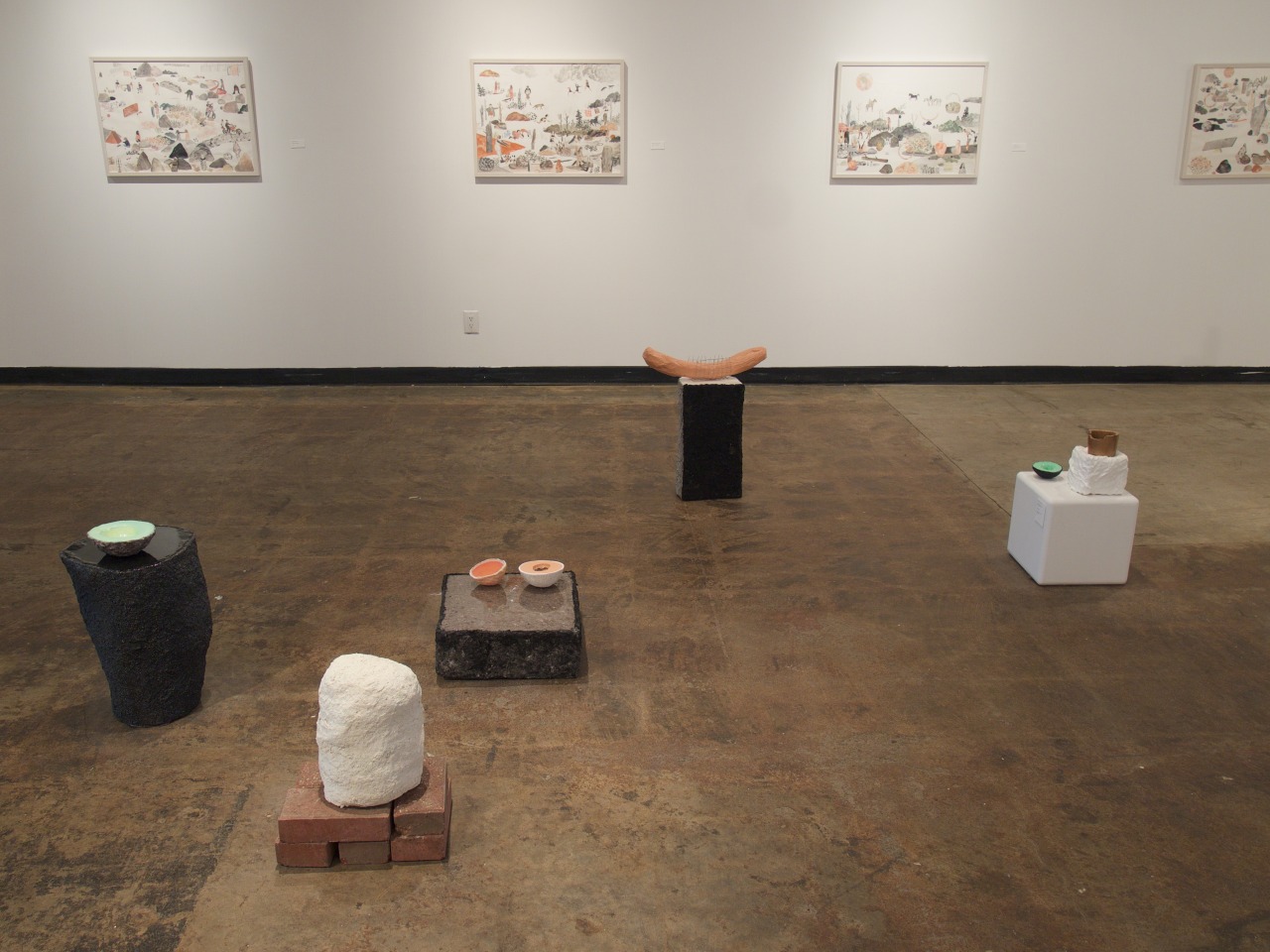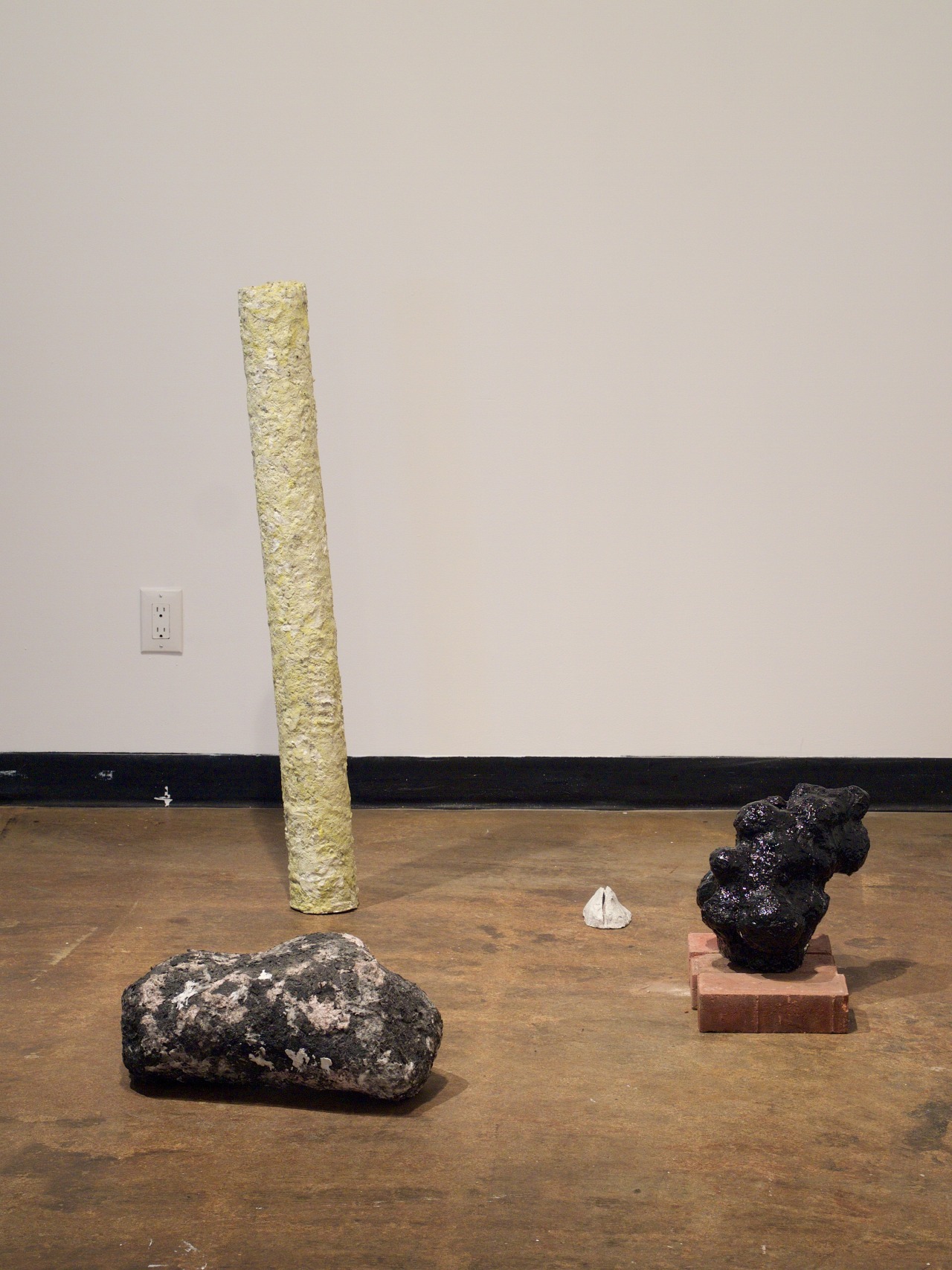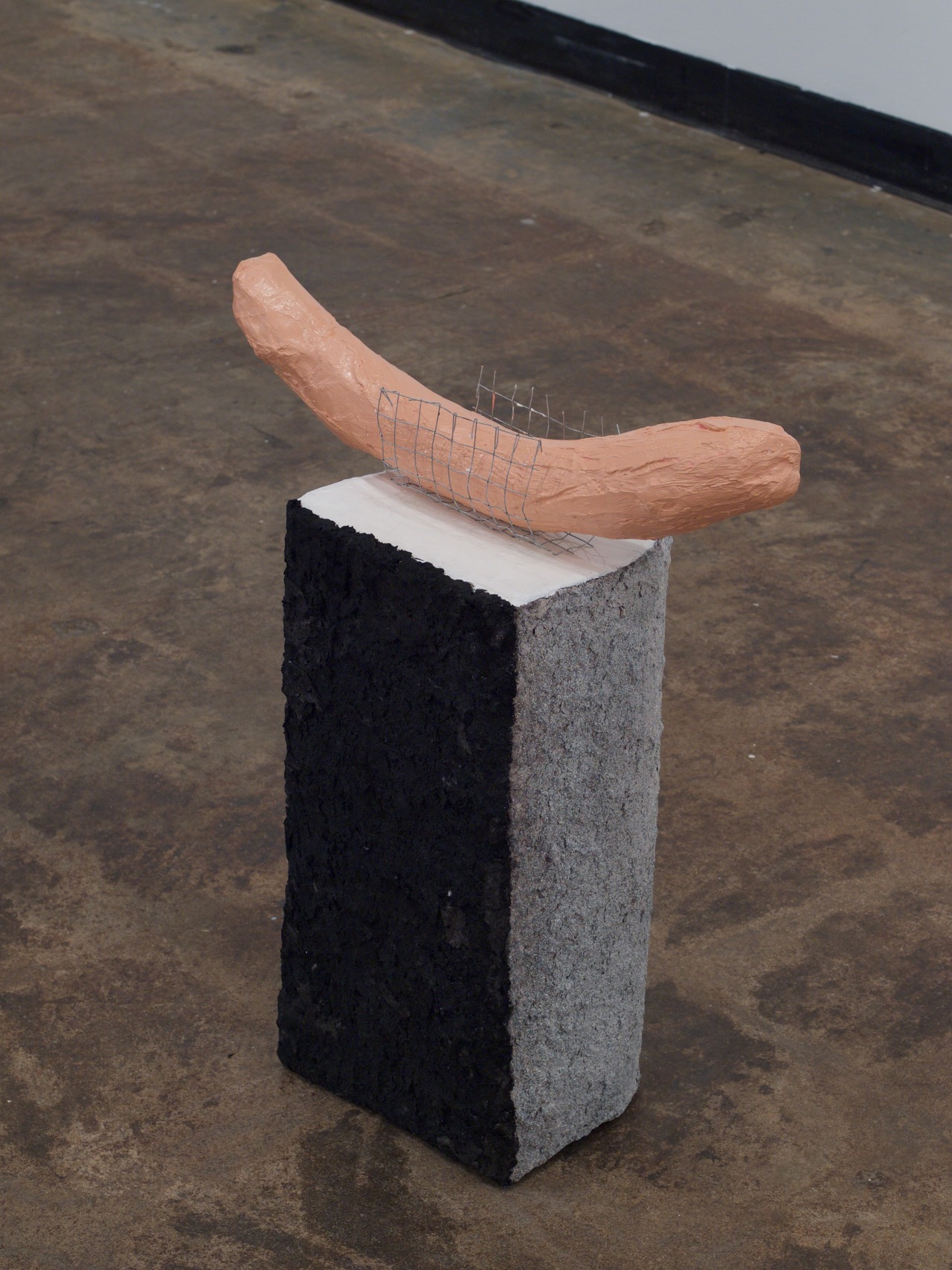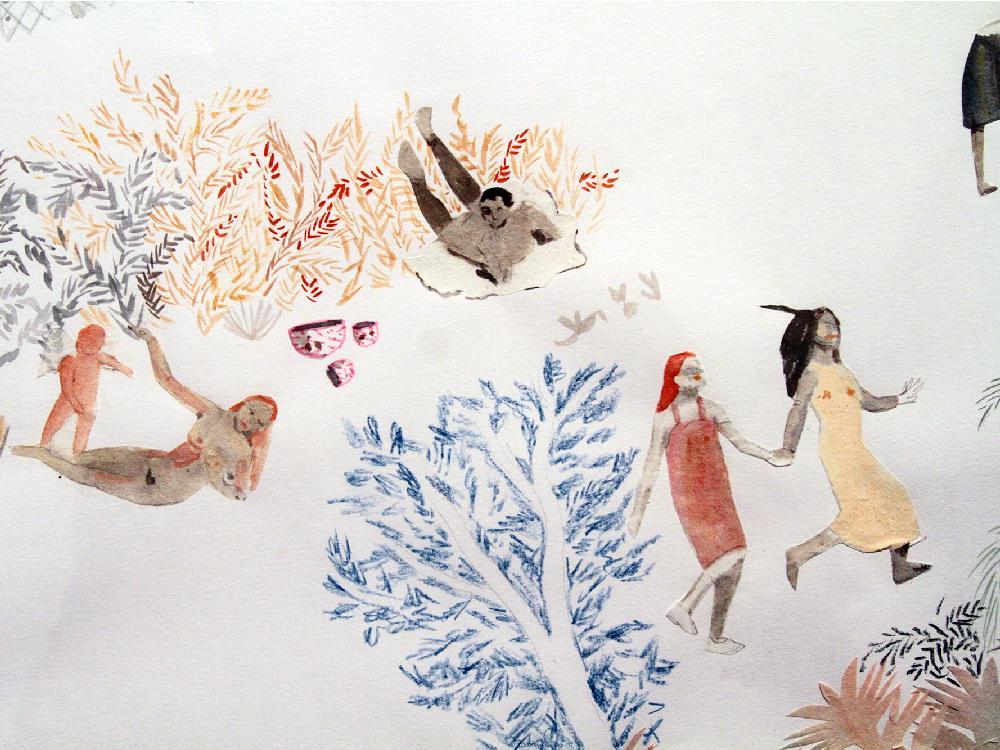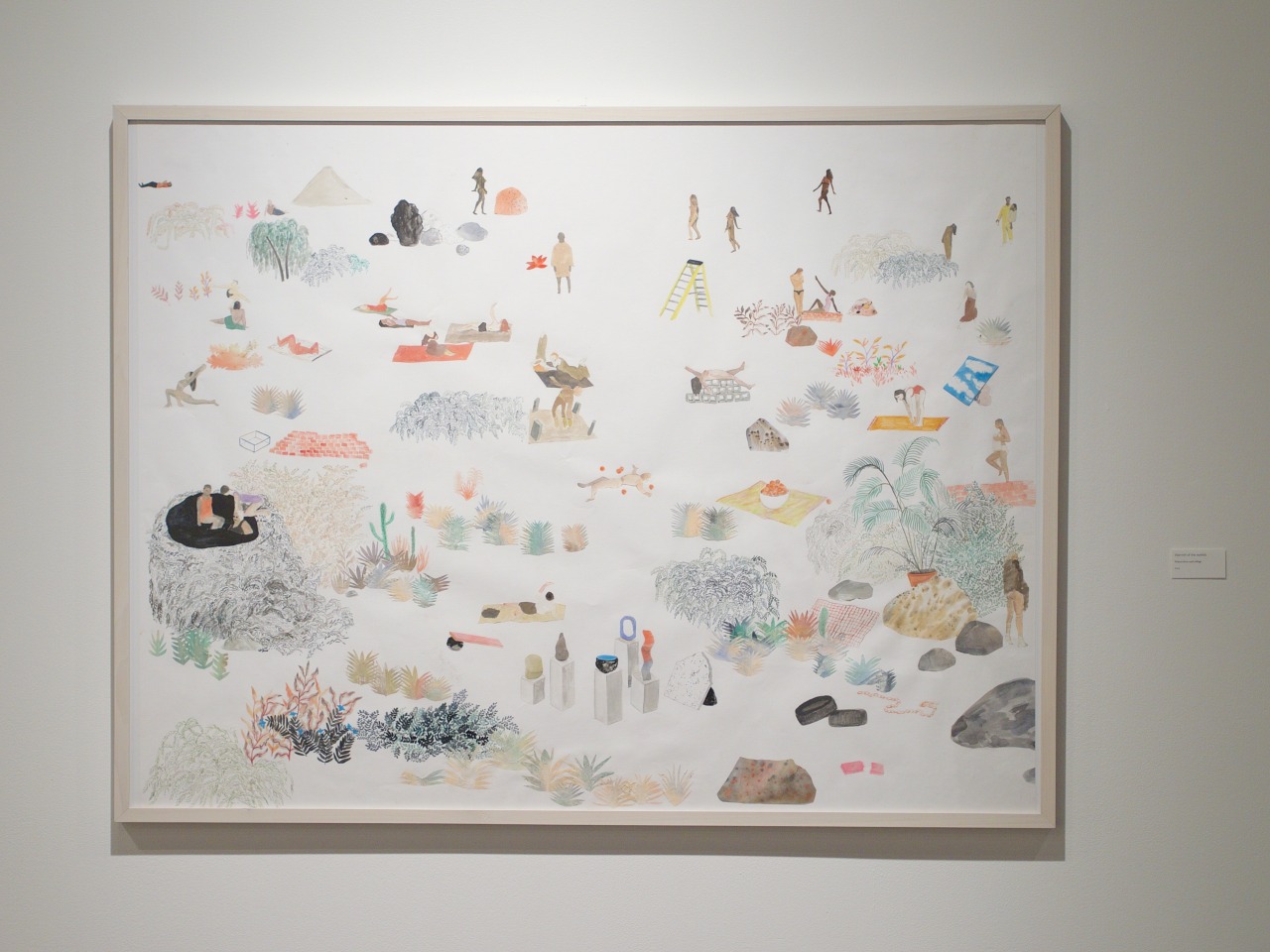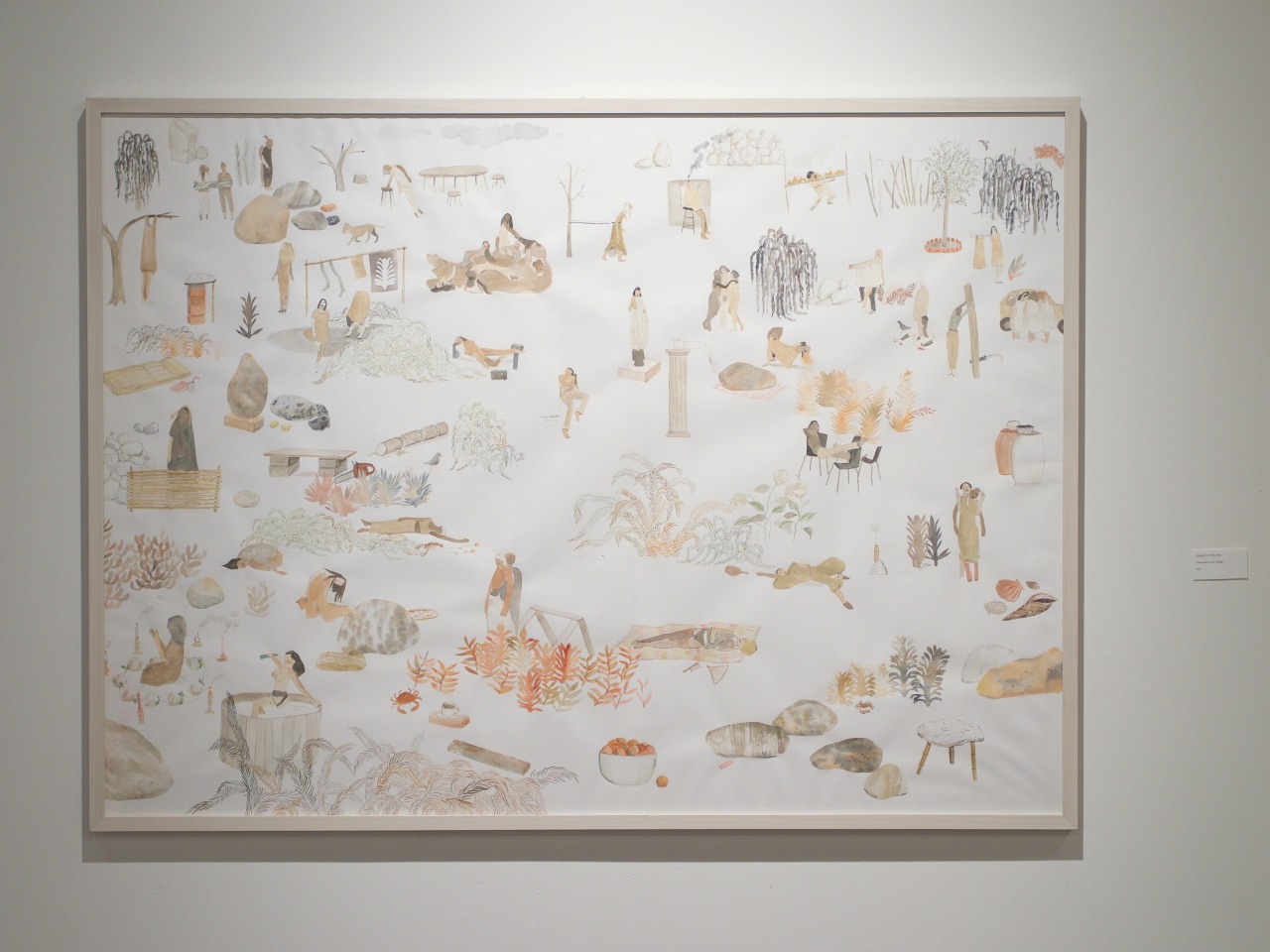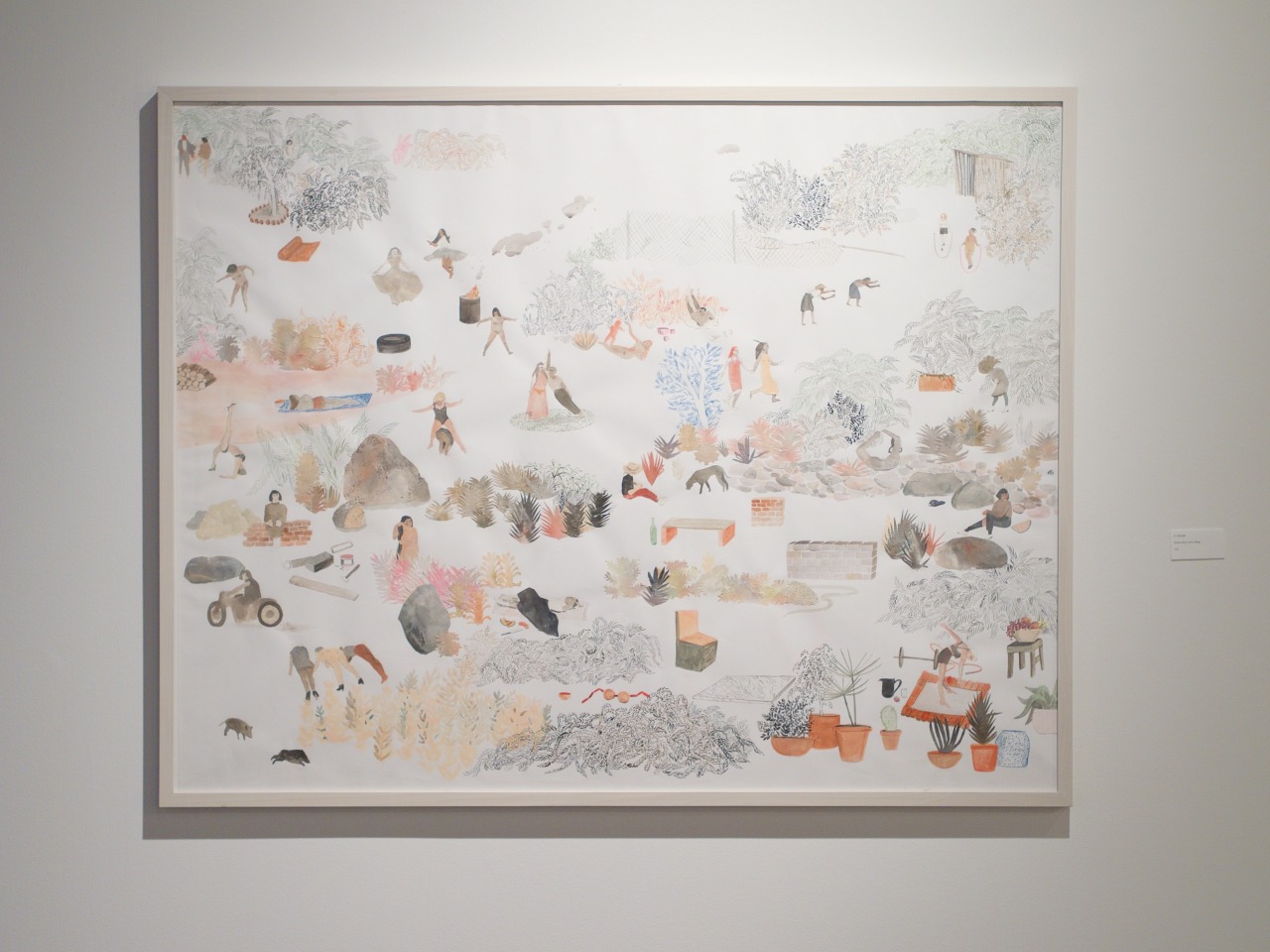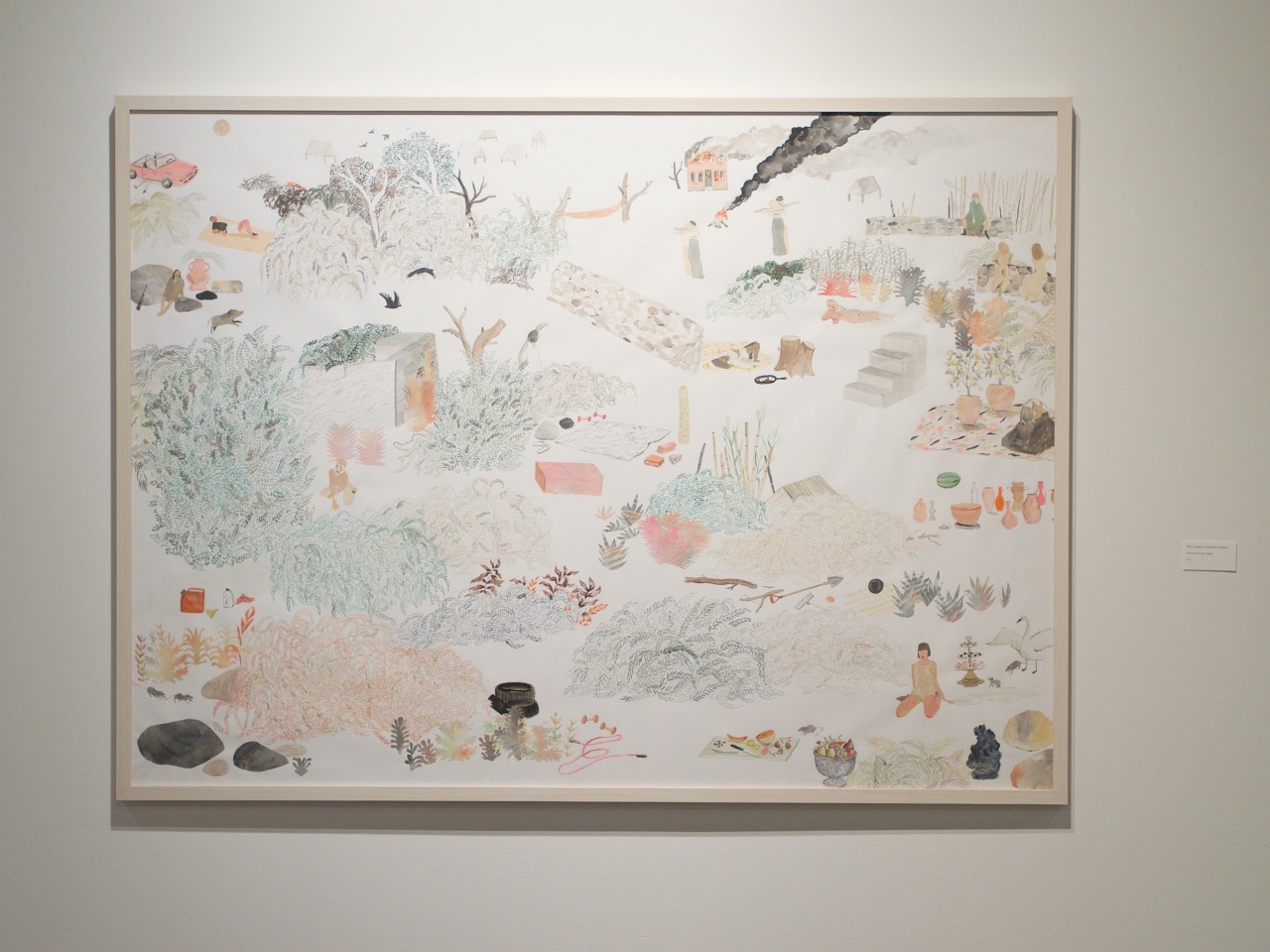Sarah Burwash | Sweet Smelling Ashes
October 2 – November 14, 2015
Opening reception | Friday, October 2 at 7 pm
Nova Scotian artist Sarah Burwash's watercolours, collage, and sculptures, place figures, living their lives in ritual, and routine, into a landscape where the arc of their lives play out. The women in her work are masterful figures, at once performing physical feats and intimate gestures towards their social world, where they experience success, failure, struggle, and grace. In Sweet Smelling Ashes, Sarah Burwash brings sculptures in several media into the gallery alongside her social-landscape paintings, creating an emphasis on materiality and consequence.
(Sarah Burwash; Paradise; and) the Normal of Shifting Spaces
By Sarah Hamilton
If the elements of paradise could be perverted into some form of hell, the upper Mojave is it. The loveliness implied in name, weather, and geography betrays the profound absence that engulfs the entire region; where there isn’t something, there is a whole lot of loneliness. But where there is something, there’s some really weird somethings. Sarah Burwash has delivered us here her own Mojave.
1. Paradise
The notion of paradise is closely tethered to the idea of a pleasant landscape with a good weather forecast. Hieronymus Bosch’s Garden of Earthly Delights, a triptych from the early 16th century, sandwiches a vignette of Earth between boring and dramatic realizations of Heaven and Hell. Bosch experiments with foregoing perspective, tempering his work with scale, but no hierarchy. Chaos reigns in Bosch’s work, and the viewer can gaze over the piece for hours, tracing the vignettes of each character, presumably contemplating his mortal soul. As the work moves from Heaven, across Earth and into Hell, the landscape in which the figures are frozen transitions from pastoral to stormy; from manicured to wild, and from sunny to dark. Remove the religious context from the work, and our intuition still tells us: the forecast for paradise is perfect everyday of the week. And you can’t buy an umbrella in hell.
(It is also true that you can’t buy an umbrella in the Mojave, so pack accordingly.)
2. Lost
Our notions of paradise can be seen between the figures.
In the Realms of the Unreal, the long mixed media work by American outsider artist Henry Darger, his elaborate novel is illustrated by long, detailed watercolour and collage scrolls, many depicting his characters (young girls) in various scenes from the book. The images are fantastical, and without their accompanying text, curious and disturbing. The girls mainly reside in a garden, beset with a few hills, trees and boundless skies. In the middle of the illustrative series, the topography changes from pastoral to industrial, and the landscape changes to craggy rocks and insurmountable mountains with a chance of rain. Though we know very little of the actions in the work (without the accompanying text) the figures don’t repeat themselves, even though the landscape shifts the narrative from home, to war, to massacre and back again. The figures within the pieces are a curious distraction to the consolation we find in recognizing our own insecurities within the foundation of the work.
3. The Normal of Shifting Spaces
In Sweet Smelling Ashes Sarah Burwash is part writer, part creator. She is exchanging the privilege of the narrative, with foreground, hierarchy and all that nonsense, for the curiosity of the bird’s eye view and character development.
There are some pretty strange somethings happening in between the nothings of Sarah Burwash’s work. At each turn in the delicate collages do we find a scene, often depicting young women, that drives our curiosity; yet, like a campsite, no two events relate to one another, each scene a composed element in the larger chaos of the work. The space between each site is carved out for our imagination, a way to position ourselves just outside the boundaries of each happening without implicating ourselves in it. Somewhere between Paradise and Hell, there’s the place we have live. Without the landscape in place to bookend our moral prerogatives, we are free as a lonely viewer to withhold our judgment and see how this whole thing plays out.
The Mojave, as a paradise, is a trap; it’s bareness exposes the fault in our thinking—that landscape can bookend our existence. Instead, the desert, like the ground of Burwash’s work, exposes the normal of shifting spaces; that our environment both defines the narrative of our lives, and pulls the rug out from under it. In the absence of that sublime narrative, our own vulnerabilities and curiosities are exposed and liberated.
-
Sarah Hamilton is a writer and artist based in Edmonton. She is a founding editor of SerpentineMagazine.com
